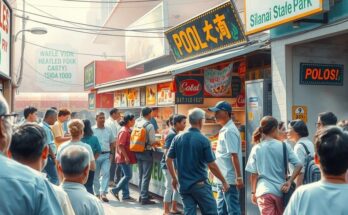Toluca, the capital of México state, has a 500-year legacy of chorizo production initiated during the Spanish colonization by Hernán Cortés. Unique ingredients such as corn and local chilies distinguish Toluca’s chorizo from the Spanish version. Chorizo rojo and verde represent the two primary varieties, each with distinct characteristics. The annual Expo Chorizo showcases its culinary significance, affirming the region’s cultural heritage.
The state of México, specifically its capital city Toluca, is renowned for its rich history of chorizo production, which dates back to the Spanish colonization in the early 16th century. This tradition began with Hernán Cortés, who introduced livestock to the region. The introduction of corn and native chili peppers notably altered the flavor of chorizo, differentiating it from its Spanish counterpart.
Toluca’s chorizo emerged uniquely due to the local practice of feeding pigs with corn, enhancing its taste. The use of various chili peppers, including ancho and guajillo, contributed to its distinctiveness. While Spanish chorizo traditionally contained substantial pork fat, Mexican chorizo incorporated a blend of native ingredients like salt, vinegar, and various spices to create a richer flavor profile.
By the late 16th century, Toluca became the center of chorizo production in Mexico, alongside other pork products. This reputation was emphasized in a grand culinary event in 1713, celebrating the birth of a royal prince, where chorizo made a notable appearance. The chorizo from this region is typically categorized into rojo and verde, with the latter developed during the late 20th century. Notably, chorizo verde’s origins trace back to Texcalyacac, illustrating the evolving nature of Mexican cuisine.
Chorizo rojo remains prevalent, characterized by ground pork with a blend of spices. Ingredients can vary among producers, but the typical composition consists of 80% pork and 20% fat. Unlike smoked or cured varieties, it is sold fresh, necessitating thorough cooking before consumption. In contrast, chorizo verde gained popularity for its vibrant color derived from tomatillos and herbs, marking a distinct evolution in sausage-making traditions.
Longaniza, another sausage rooted in Spanish cuisine, is well recognized for its longer shape and maroon hue, attributable to achiote and paprika. Traditionally, chorizo was made from premium pork while longaniza utilized cost-effective cuts. Longaniza verde exists but is not as widespread.
Chorizo transcends geographical boundaries, frequently featured in a variety of regional dishes across Mexico. It complements breakfast eggs and enhances tacos, tortas, and quesadillas. A celebrated way to experience Toluca’s chorizo is through the pambazo de chorizo con papas—a signature sandwich. The annual Expo Chorizo showcases this rich culinary tradition, with the next event scheduled for July 19-20, 2025.
The enduring legacy of chorizo from Toluca is unmatched in quality within Mexico and beyond. The term choricero, synonymous with local identity, reflects the deep cultural connection the inhabitants of Toluca have with this cherished culinary tradition. Even the local football team carries the nickname Los Choriceros, reinforcing this culinary pride.
Toluca’s chorizo carries a historical and cultural significance that has evolved over 500 years. With its distinct flavor influenced by local ingredients, it stands apart from its Spanish roots. Today, chorizo remains an integral part of Mexican cuisine, transcending boundaries and celebrated through events such as the Expo Chorizo, indicative of its enduring legacy. This connection to chorizo underlines Toluca’s unique culinary identity.
Original Source: mexiconewsdaily.com




